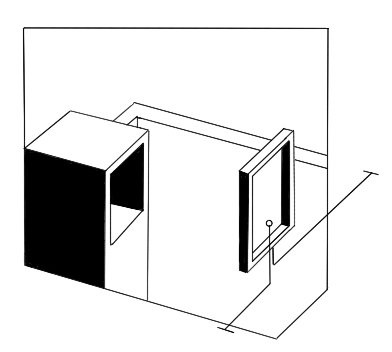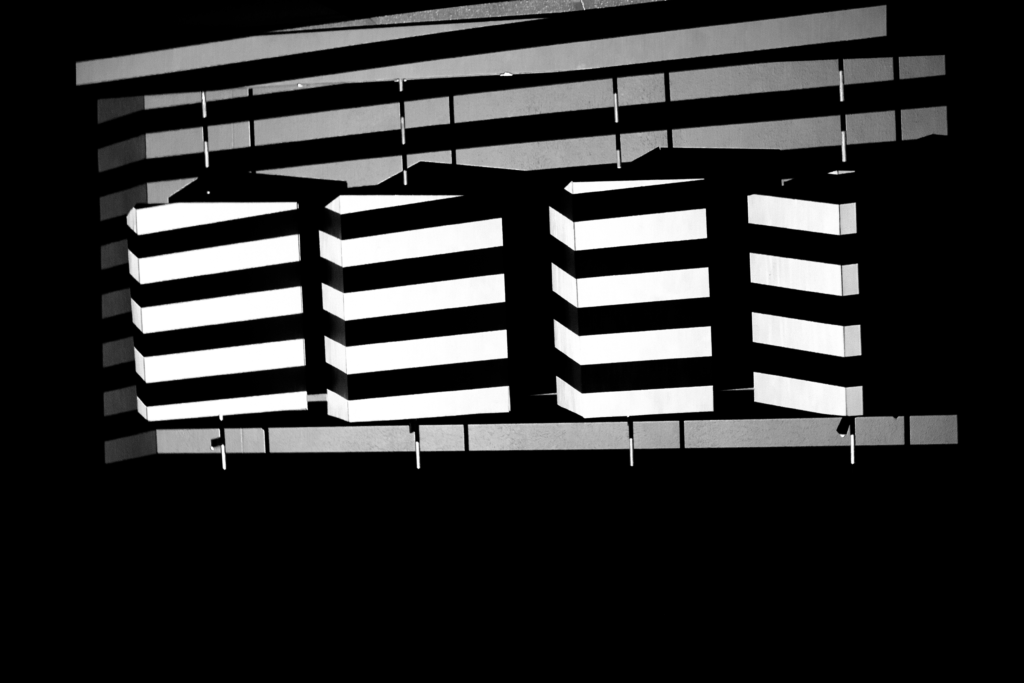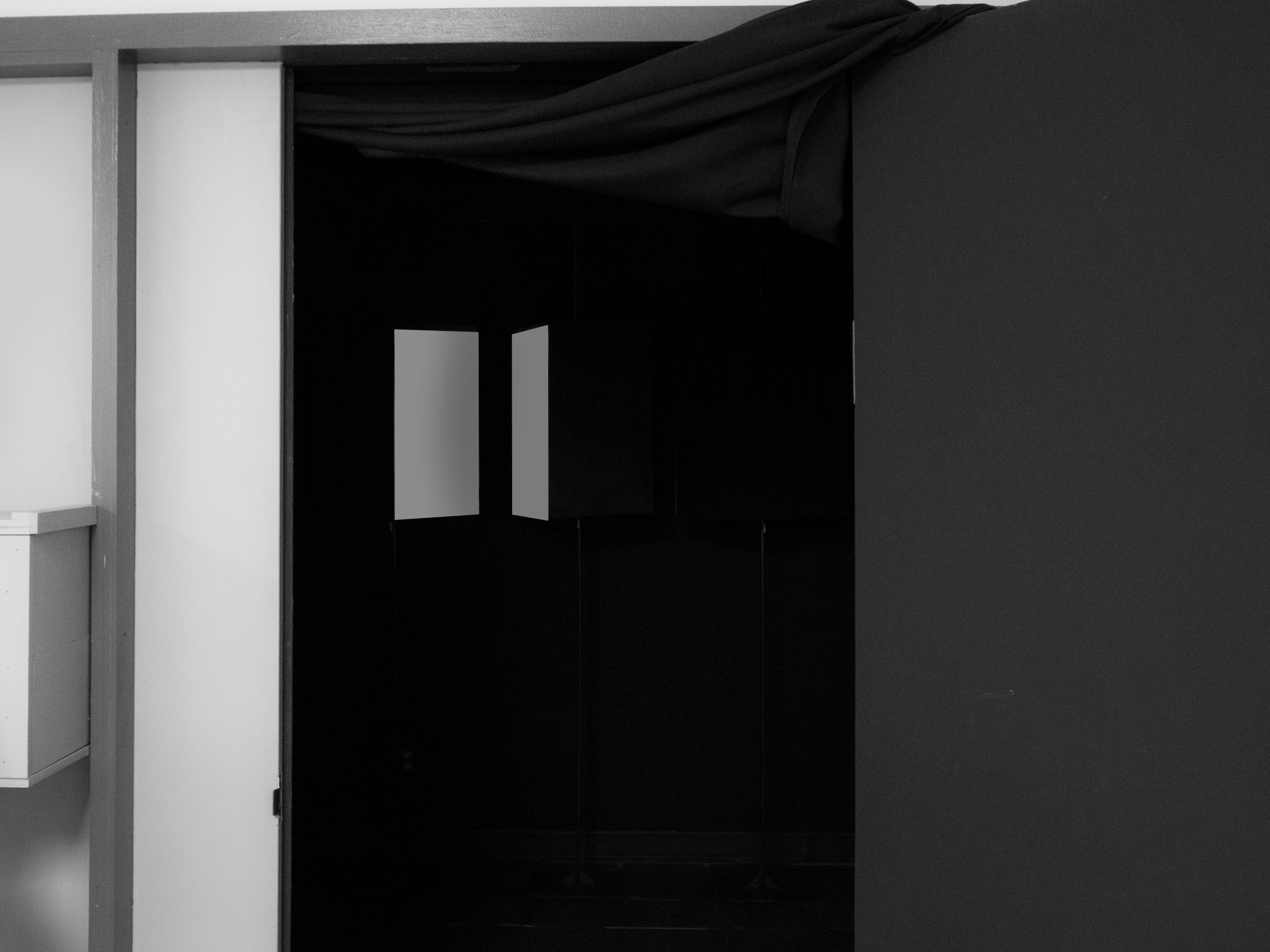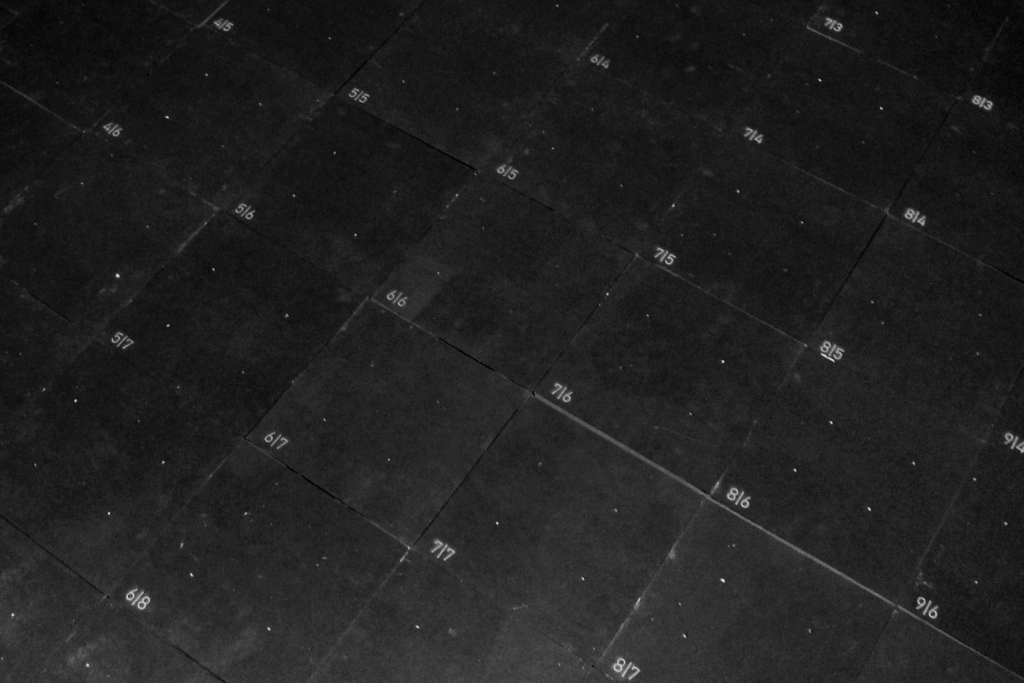
sense|base
sense|base

The sense|base laboratory, directed by Dr. Tiziana Proietti, is housed at the University of Oklahoma College of Architecture. It is an interdisciplinary laboratory that bridges architecture to neuroscience with emphasis on the perception of proportion.
In this project we investigate questions of perceptibility of architectural proportion by means of scientific method. We test the human ability to discriminate proportion of objects under perspectival distortion. We reveal how such ability depends on the viewing conditions.
In this project we investigate questions of perceptibility of architectural proportion by means of scientific method. We test the human ability to discriminate proportion of objects under perspectival distortion. We reveal how such ability depends on the viewing conditions.



Observation device for experiment of immersive observation | the observation devices is a black painted room designed to study the perception of proportion in three-dimensional volumes under perspectival distortion. A 9×9 grid on the floor is built to control the location and orientation of the objects and subject. A 3D mapping projector is used to lit facets of the objects across trials.
Observation device for experiment of immersive observation | the observation devices is a black painted room designed to study the perception of proportion in three-dimensional volumes under perspectival distortion. A 9×9 grid on the floor is built to control the location and orientation of the objects and subject. A 3D mapping projector is used to lit facets of the objects across trials.
In immersive observation, the observer is seated or walking through a room, in which the objects are either suspended at different distances from the observer, or their images are projected on the walls. The observer’s task is the same as in external observation.
In external observation, objects are presented inside a variant of camera obscura that affords monocular and binocular viewing. The observer looks inside the device through a pinhole or aperture, and reports which object appears to have a larger proportion using a six-point rating scale.
In both cases of external and immersive observation, we use methods of sensory psychophysics to investigate the observers’ ability to discriminate proportions of three-dimensional objects.
In immersive observation, the observer is seated or walking through a room, in which the objects are either suspended at different distances from the observer, or their images are projected on the walls. The observer’s task is the same as in external observation.
In external observation, objects are presented inside a variant of camera obscura that affords monocular and binocular viewing. The observer looks inside the device through a pinhole or aperture, and reports which object appears to have a larger proportion using a six-point rating scale.
In both cases of external and immersive observation, we use methods of sensory psychophysics to investigate the observers’ ability to discriminate proportions of three-dimensional objects.
Experiment of Immersive Observation | Human subjects view pairs of lit panels sampled from the morphotheek. Aspect ratios tested are either 3:4 or 4:7.
On each trial, the experimenter runs a slideshow using a projector to light up two sides of the four blocks lined at the top of the 9×9 grid. The condition order is sampled randomly, and sets are shuffled for each experiment. The task is to compare aspect ratios of the stimuli.
Experiment of Immersive Observation | Human subjects view pairs of lit panels sampled from the morphotheek. All aspect ratios tested are either 3:4 or 4:7.
On each trial, the experimenter runs a slideshow using a projector to light up two sides of the four blocks lined at the top of the 9×9 grid. The condition order is sampled randomly, and sets are shuffled for each experiment. The task is to compare aspect ratios of the stimuli.